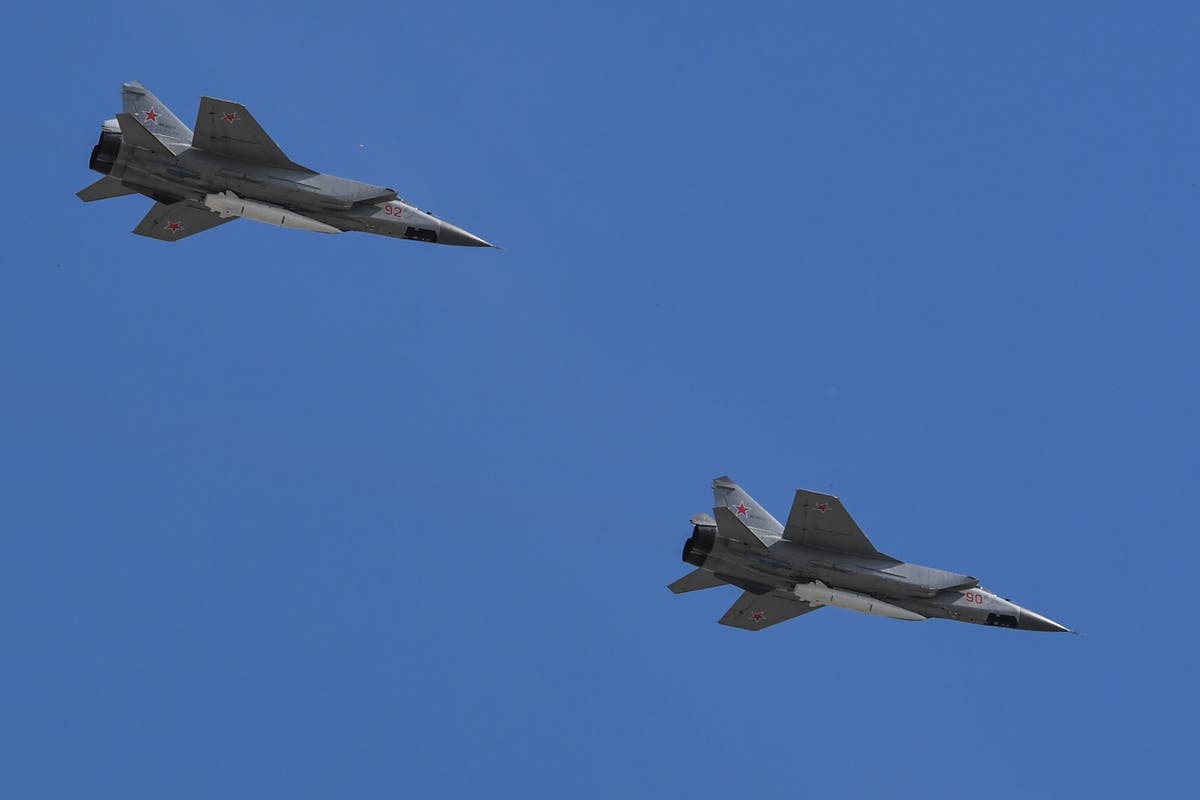Hypersonic missiles have been fired in another deadly Russian barrage across Ukraine – killing at least 41 people, injuring dozens more and destroying a children’s hospital.
The Ohmatdyt Children’s Hospital was reduced to rubble as part of the attack, which Kyiv mayor Vitali Klitchsko warned was one of the worst the capital had suffered since Russia’s full-scale invasion in 2022.
According to the Ukrainian Air Force, the daylight attacks included Kinzhal (Dagger) hypersonic ballistic missiles, which fly at up to 8,000mph – around 10 times the speed of sound – making them difficult to intercept.
Follow latest updates on Ukraine-Russia war as Kyiv reels from deadly strike by Putin’s forces
Russia has used hypersonic missiles since the earliest stages of the conflict, claiming to have destroyed a fuel depot in the Black Sea city of Mykolaiv and an underground ammunition store in western Ivano-Frankivsk in the opening skirmishes. Moscow is also believed to have used its newly completed Zircon missile in February.
But armed with growing numbers of Patriot air defence systems, Ukraine has had successes in shooting down Russia’s hypersonic missiles, significantly undermining Vladimir Putin’s claims of their supremacy.
Hypersonic missiles, like the Kinzhal rockets deployed by the Russian Air Force, are thought to represent the next generation of arms because they can move at such exceptionally high velocities.
By comparison, a subsonic cruise missile like the US Air Force’s Tomahawk rocket moves at a relatively sluggish 550mph.
Kinzhals are typically carried by MiG-31K fighter jets and can hit targets as far away as 1,250 miles. Their speed, mid-flight manoeuvrability and ability to fly at low altitudes makes them difficult to track using radar on the ground, and therefore near-impossible to stop.

Perhaps most alarmingly, the Kinzhal can carry a nuclear warhead as well as a conventional explosive, a strategy it has been feared Russia could resort to as its war in Ukraine becomes more desperate and drawn-out than expected due to the heroic resistance put up by the locals.
Military analyst Pavel Felgenhauer, however, has argued that the weapons will make little difference on the ground and that their true value is “giving a certain psychological and propaganda effect”.
In other words, inspiring terror.
Mr Putin has boasted of Russia’s investment in such “invincible” weaponry, justifying doing so as a response to what he considers to be Nato military expansion on his country’s doorstep in Eastern Europe, the same line of thinking that has led to the present war.
The US and China are said to be working on their own hypersonic rockets, as are the navies of Britain and France, which are understood to have been collaborating on one known as Perseus since 2011, although it is not expected to enter service for another eight years.

In 2022, Australia, the UK and US, together known as the Aukus nations, announced that they plan to expand their military pact to collaborate on the development of hypersonic missiles and anti-hypersonic weapons.
Then-prime ministers Scott Morrison and Boris Johnson joined US president Joe Biden in issuing a joint statement saying the three partner countries would “commence new trilateral cooperation on hypersonics and counter-hypersonics, and electronic warfare capabilities, as well as to expand information sharing and to deepen co-operation on defence innovation”.
They added: “These initiatives will add to our existing efforts to deepen cooperation on cyber capabilities, artificial intelligence, quantum technologies, and additional undersea capabilities.”
The Aukus deal was initially signed in September 2021 to concentrate on nuclear submarine development with a wary eye on potential Chinese aggression in the Pacific, but the focus has now shifted towards the threat posed by Russia in the wake of its invasion.
“In light of Russia’s unprovoked, unjustified, and unlawful invasion of Ukraine, we reiterated our unwavering commitment to an international system that respects human rights, the rule of law, and the peaceful resolution of disputes free from coercion,” the leaders said.

